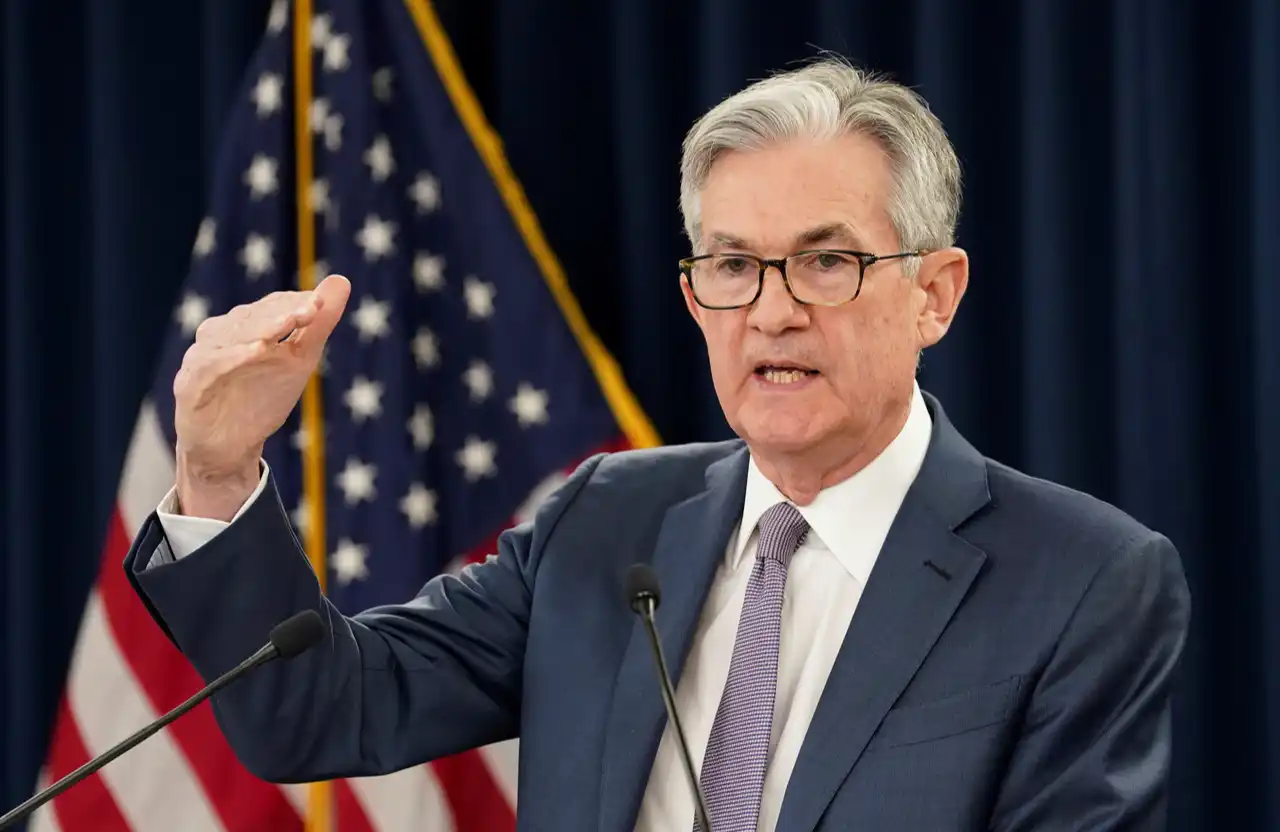Will the Market Definitely Rise After the September Rate Cut?
The September rate cut this year seems to be a high-probability event, and the biggest question now is: Will the market rise after the rate cut?
From historical experience, the answer is likely yes, but not every rate cut results in a market rise.
In the market's intuition, "rate cut" is almost equivalent to a signal of liquidity release and asset price appreciation. However, looking back over the past thirty years, the Fed's rate cuts are far from as simple as they seem on the surface. Sometimes they are a precautionary measure to avert risks, and sometimes they are emergency relief measures to support the economy in times of crisis.
Since 1990, the Fed has gone through five major rate-cutting cycles, each with different economic backgrounds and policy motives, resulting in significantly different market reactions. To understand the relationship between rate cuts and the market, one cannot simply view it as a "bull market button" but must analyze it in conjunction with the macroeconomic environment and investor sentiment at the time.

It has been a full year since the last rate cut, and now the market is once again focusing on the September interest rate meeting. According to FedWatch data, the probability of a 25 basis point rate cut by the Fed in September is as high as 83.6%. Looking back over the past year, after the rate cut, not only did the S&P and Nasdaq hit new all-time highs, but Bitcoin also surged, leading the market to once again anticipate the logic that "rate cut equals bull market." Coinbase also believes that an easing monetary cycle will usher in the altcoin season. However, is there really an inevitable connection between rate cuts and the market performance? This article will review the economic and stock market performance during each rate-cutting cycle by the Fed since 1990, providing a more rational basis for judging whether a bull market is imminent.

Rate Cuts and Bull Markets: Stock Market Performance During Rate-Cutting Cycles
1990-1992: Gulf War and Soft Landing After the S&L Crisis
From 1990 to 1992, the U.S. economy faced the combined impact of the Savings and Loan (S&L) crisis and the Gulf War, leading to a credit crunch, a sharp slowdown in consumption and investment, and a rapid economic recession. The Fed began cutting rates in July 1990 and continued until September 1992, reducing the federal funds rate from 8% to 3%, initiating a robust easing cycle.
Initially, the Fed only observed a weakening economic momentum and instability in the financial markets, choosing to gradually shift towards monetary easing. However, Iraq's invasion of Kuwait in August led to soaring oil prices, economic downturn, and market panic, forcing the Fed to accelerate its rate cuts. By October, with further economic weakening and a government budget agreement to reduce the deficit, the Fed intervened again. By the end of 1990, financial system pressures intensified, but inflation eased, creating room for more substantial easing.
This interest rate cut effectively alleviated the credit crunch and the negative impact of the geopolitical crisis. The U.S. CPI rose from 121.1 points in 1989 to 141.9 points in 1993, but the year-on-year growth rate dropped from 4.48% to 2.75%, bringing inflation under control; meanwhile, the GDP growth rate rebounded from -0.11% in 1991 to 3.52% in 1993, putting the economy back on a growth trajectory.
The reaction in the capital markets was more direct. From 1990 to 1992, the Fed's interest rate cuts significantly boosted investor confidence, with the Dow Jones Industrial Average rising 17.5%, the S&P 500 gaining 21.1%, and the tech-heavy Nasdaq leading the way with a soaring 47.4% surge, becoming the strongest recovery sector post-crisis.

1995-1998: Preventing Economic Recession and the Asian Financial Crisis
After navigating the tightening cycle of 1994-1995 and successfully achieving a "soft landing," the U.S. economy still faced concerns of slowing growth. To avoid over-tightening and a recession, the Fed decisively shifted to accommodative measures in 1995-1996, using interest rate cuts to support the economy. This operation proved to be quite successful—U.S. GDP growth rate rose from 2.68% in 1995 to 3.77% in 1996, and further leaped to 4.45% in 1997, propelling the economy back onto an upward trajectory.
However, in July 1997, the Asian financial crisis erupted, causing severe turbulence in the capital markets. While the U.S. domestic fundamentals remained strong, global uncertainties surged sharply, and the LTCM (Long-Term Capital Management) crisis further ignited market panic. To prevent external shocks from dragging down the domestic economy, the Fed cut interest rates three times between September and November 1998, lowering the federal funds rate from 5.5% to 4.75%.
The effects of this round of moderate rate cuts were quite significant, with the economy maintaining its expansionary trend, and the capital markets experiencing a carnival. Since the start of the accommodative measures, the Dow Jones Industrial Average surged more than doubled, registering a 100.2% increase; the S&P 500 skyrocketed by 124.7%; and driven by the tech frenzy, the Nasdaq rose by 134.6%, accumulating energy ahead of the subsequent dot-com bubble.

2001–2003: Recovery After the Dot-Com Bubble
Between 2001 and 2003, the U.S. economy faced the bursting of the dot-com bubble, the 9/11 terrorist attacks, and the subsequent recession impact, causing the market to plunge into a deep downturn. The collapse of the dot-com bubble led to a stock market crash that quickly spread to the real economy, with corporate investment plummeting, unemployment soaring, ultimately triggering an eight-month-long recession. The already fragile recovery momentum suffered a severe blow again after the September 2001 terrorist attacks, causing a rapid decline in financial market and consumer confidence.
To address these heavy pressures, the Federal Reserve carried out one of the most aggressive easing operations in history in just two years. The federal funds rate was slashed from 6.5% in early 2001 to 1.75% by December of that year, further reduced to 1% in June 2003, with a cumulative decrease of up to 500 basis points. The Fed hoped to stimulate corporate reinvestment and consumer spending by offering extremely low financing costs to stabilize the economic foundation.
The policy did indeed avert a more severe systemic crisis, but the recovery process was not smooth sailing. In 2002, the U.S. real GDP growth rate was only 1.7%, with weak corporate investment and persistently high unemployment rates, making the economic recovery arduous. However, as the easing policy gradually transmitted, the growth momentum significantly rebounded in 2003–2004, with the GDP growth rate rising to 3.85% in 2004, and the U.S. economy regaining stability.
However, the stock market's response was far from expectations. The drastic rate cuts failed to reverse the market's decline, with the three major indices still posting losses from 2001 to 2003: the Dow Jones fell by 1.8%, the S&P 500 dropped by 13.4%, and the Nasdaq, dominated by tech stocks, plummeted by 12.6%. The experience during this period indicated that even significant monetary easing could not immediately counter the profound impact of a structural bubble burst.

2007–2009: Financial Crisis and the Zero Interest Rate Era
From 2007 to 2008, the global financial crisis erupted, causing a profound impact on the U.S. economy and financial system. The root of the crisis lay in the collapse of the real estate bubble and the concentrated outbreak of subprime mortgage issues. Previously, the U.S. real estate market had been thriving, but as home prices fell, a large number of borrowers defaulted, financial institutions suffered heavy losses holding massive amounts of subprime loans and related derivatives, leading to a credit market freeze and sudden liquidity drought.
Facing the rapidly escalating crisis, the Federal Reserve began an aggressive rate-cutting cycle from September 2007, with the federal funds rate continuously reduced to the 0–0.25% range by the end of 2008, a total decrease of 450 basis points, almost touching the zero lower bound. The core purpose was to stabilize the financial market and banking system through extremely loose liquidity supply, alleviate the impact of credit crunch on the real economy. In March 2008, the Fed even intervened to broker JPMorgan's acquisition of the near-bankrupt Bear Stearns to prevent a chain reaction of the crisis.
However, the market's panic did not dissipate as a result. In September 2008, Lehman Brothers collapsed, marking the full outbreak of the financial crisis. Subsequently, global markets fell into a liquidity panic, the U.S. unemployment rate soared to over 10%, corporate and household assets plummeted significantly, and the economy experienced its most severe recession since the Great Depression. CPI showed rare deflationary pressures, reflecting a cliff-like drop in demand.
From a macro data perspective, rate cuts did not stop the spread of economic recession. The U.S. GDP growth rate had already dropped to 1.9% in 2007, further falling to -0.1% in 2008, and shrinking by -2.5% in 2009. It wasn't until 2010, with the combined force of ultra-loose monetary and fiscal stimulus policies, that the U.S. economy gradually stabilized, with GDP growth rebounding to 2.6%, laying the foundation for a decade-long expansion cycle thereafter.
The stock market's performance was even more brutal. Between 2007 and 2009, the Dow Jones Industrial Average plunged by 53.8%, the S&P 500 Index dropped by 56.8%, and the Nasdaq Index fell by 55.6%. This "Great Recession" revealed that relying solely on rate cuts was insufficient to resolve the crisis.

2019–2021: Preemptive Easing and Pandemic Shock
In August 2019, the Federal Reserve initiated a new round of rate cuts in response to global economic slowdown and uncertainty caused by events like the U.S.-China trade friction. However, this seemingly mild preemptive easing was pushed to the extreme in early 2020 by the sudden onset of the COVID-19 pandemic. The pandemic rapidly spread, leading to unprecedented economic lockdowns and shutdowns, global supply chain disruptions, a sharp drop in consumption, soaring unemployment rates, and financial markets experiencing intense volatility amid panic.
To stabilize the situation, in March 2020, the Federal Reserve urgently slashed the federal funds rate from 2.25% to near-zero at 0.25% and supported by large-scale government fiscal stimuli, introduced unlimited quantitative easing measures with a rapid expansion of its balance sheet. This was not just a rate cut but also an extremely rare "unconventional operation" in monetary policy history, demonstrating the central bank's determination to stabilize the financial system and economic fundamentals.
From a macro data perspective, the U.S. economy remained relatively stable in 2019 with a GDP growth rate of 2.3%, lower than previous years but still within a healthy range. However, 2020 became a turning point under the impact of the pandemic. The U.S. GDP experienced a historic contraction of -3.4%, the most severe shrinkage since the 2008 financial crisis. Thanks to the ultra-loose monetary and fiscal combination, the U.S. economy rapidly rebounded in 2021 with a GDP growth rate as high as 5.7%, becoming one of the fastest recoveries in forty years.
The stock market performance was equally breathtaking. After a sharp drop in March 2020, driven by loose monetary policies and a flood of liquidity, the U.S. stock market embarked on a "V-shaped recovery" and then skyrocketed: between 2019 and 2021, the S&P 500 Index rose by 98.3%, the Nasdaq surged by an impressive 166.7%, and the Dow Jones Industrial Average also recorded a significant 53.6% gain. The extreme rate cuts and quantitative easing during the epidemic eventually gave rise to the most rapid liquidity-driven bull market in U.S. stock market history.

How the Two Biggest Bull Markets in Crypto History Unfolded
2017: ICO Craze and the First Crypto Bubble
2017 is widely regarded as the "first major breakout" for the crypto market and the starting point for altcoins to truly enter the public eye. Against the macroeconomic backdrop, the global economy was in a phase of recovery, the U.S. economy was performing steadily, and although the Federal Reserve had started to raise interest rates, the overall interest rate level remained historically low, with the liquidity left by the previous years of monetary easing still lingering in the market. This macro environment provided a good growth medium for speculative assets.
Bitcoin's price skyrocketed from less than $1,000 at the beginning of the year to nearly $20,000 at the end of the year. The meteoric rise of the flagship asset directly attracted a large amount of new capital and retail investors into the market. In this context, altcoins experienced an unprecedented boom. Unlike before, the biggest driving force behind the 2017 altseason was the ICO model: almost any project that issued tokens based on Ethereum could complete fundraising in a short period of time. Numerous new coins emerged, creating a scene where "a hundred coins were flying."
Ethereum was undoubtedly the core beneficiary of this market cycle. As ICO projects were mostly based on Ethereum for token issuance, Ethereum itself became the primary entry point for market funds. The price of ETH soared from a few dollars to $1,400 within a year, driving the valuation of the entire altcoin sector to new heights. At the same time, from public chains, payments, storage to various new concept tokens, regardless of the solidity of the narratives, almost all could attract funding in a short period of time.
However, behind the frenzy often lies a bubble. The altseason of 2017 was fundamentally a liquidity-driven speculative feast, where the investment logic relied more on "new stories" rather than actual applications. As we entered the beginning of 2018, with Bitcoin peaking and retracing, altcoin prices generally experienced deep retracements of 80%-90%. Many projects lacking fundamentals quickly went to zero, leaving a mess behind.
Looking back on this history, the 2017 altseason laid the foundation for the first global recognition of the cryptocurrency market: Cryptocurrency assets can generate tremendous wealth effects driven by liquidity and narrative, but they can also exhibit extremely high risk when the bubble bursts.

2021: Liquidity Flood and DeFi, NFT Craze
If the 2017 altseason was a speculative frenzy ignited by ICOs, then the 2021 altseason was a comprehensive celebration amidst global liquidity abundance.
On the macro environment front, the early outbreak of the COVID-19 pandemic in 2020 prompted the Federal Reserve to quickly cut interest rates to near-zero and embark on an unprecedented quantitative easing (QE) program. At the same time, the U.S. government introduced massive fiscal stimulus, directly issuing cash checks to residents. The loose monetary and fiscal stimulus led to a flood of liquidity in financial markets, causing both traditional assets and risk assets to inflate simultaneously. Following the V-shaped rebound of the U.S. stock market in 2020, Bitcoin broke through the $20,000 mark by the end of the year and quickly surged to $60,000 in the first quarter of 2021, creating space for the altseason.
Unlike the "single-point eruption" centered around ICOs in 2017, the 2021 altseason presented a multi-track scenario. First was the rapid development of DeFi. The total value locked (TVL) of protocols such as Uniswap, Aave, and Compound grew rapidly, propelling DeFi concept tokens into independent trading rallies. Second was the emergence of NFTs, with projects like CryptoPunks and Bored Ape making "digital collectibles" a globally hot topic, and trading volume on platforms like OpenSea experiencing explosive growth. Meanwhile, Ethereum's ecosystem prosperity drove the rise of new public chains such as Solana, Avalanche, and Polygon, officially kicking off the public chain competition.
Under this narrative, ETH rose from less than $1,000 at the beginning of the year to $4,800; SOL surged from less than $2 to $250, becoming one of the biggest dark horses of the year. The entire cryptocurrency market capitalization surpassed $3 trillion in November 2021, reaching a historic peak.
However, the rapid expansion of the market also planted the seeds of a bubble. Numerous imitation projects, overfinancialized DeFi products, and meme coins lacking fundamental support quickly gained popularity as hot money flowed in but experienced significant pullbacks as liquidity receded. As the Federal Reserve began its interest rate hike cycle in 2022, global liquidity tightened, causing the cryptocurrency market to cool rapidly, with altcoins generally experiencing deep corrections of 70% to 90%.
Looking back on this phase, the 2021 altcoin season demonstrated how the crypto market can evolve into extreme prosperity under the push of liquidity flood and diverse narratives.

Current Revelation: Preemptive Easing and Altcoin Season
From a historical perspective, the Fed's rate cuts can be divided into two types: preemptive cuts and remedial cuts. The years 1990, 1995, and 2019 belong to the former, with rate cuts occurring before the economy has fully receded, more as a risk hedge, often injecting new growth momentum into the market; while 2001 and 2008 saw significant rate cuts under the heavy pressure of financial crises, leading to a sharp market downturn. Currently, with a weak labor market, tariff and geopolitical uncertainties, but signs of easing inflation, the overall environment is closer to "preemptive rate cuts" rather than a crisis backdrop. It is for this reason that risk assets have been able to continue their strong performance this year, with both Bitcoin and U.S. stocks hitting new all-time highs.
The environment facing the crypto market is also different from before. From a policy perspective, it has for the first time encountered unprecedented positives: stablecoins are gradually entering regulatory frameworks, Digital Asset Treasuries (DAT) and treasury management represented by MicroStrategy have become a corporate allocation trend, institutions are formally entering through ETFs, and the narrative of Real World Asset (RWA) tokenization is also gaining pace. Different narratives are intertwined, driving a more extensive market foundation than ever before.
Although many argue whether the rate cut in September will cause a short-term peak in the crypto market, from a fund flow perspective, this concern may be overblown. The size of U.S. money market funds has reached a record $7.2 trillion, with a large amount of funds trapped in low-risk instruments. Historically, outflows from money market funds have often been positively correlated with the rise of risk assets. As the rate cut lands, the attractiveness of their returns will gradually diminish, and more funds are expected to be released into crypto and other high-risk assets. It can be said that this unprecedented cash reserve is the most powerful potential powder keg of this bull market.

Furthermore, structurally, funds have begun to gradually move away from Bitcoin. BTC's market dominance has fallen from 65% in May to 59% in August, while the total market cap of altcoins has grown by over 50% since early July, reaching $1.4 trillion. Although CoinMarketCap's "Altcoin Season Index" remains around 40, far from the traditional definition of an altcoin season threshold of 75, this divergence between "low index value—soaring market cap" precisely reveals that funds are selectively entering specific sectors, especially Ethereum (ETH). ETH has not only benefited from institutional interest surpassing $22 billion in ETFs, but also carries the core narrative of stablecoins and RWAs, possessing an attractiveness to funds that surpasses Bitcoin.

Read more:《Coinbase Report: $7 Trillion in Cash Ready to Flow, Alt Season Could Fully Arrive in September》
Summary
The logic of this bull market is completely different from the past. Due to the large number of projects, the market is no longer able to reproduce the heyday of "all coins flying together." Investors' focus is gradually shifting towards value investing and structural opportunities—funds are more willing to flow into top projects with real cash flow, compliance prospects, or narrative advantages, while assets in the long tail lacking fundamental support are destined to be marginalized.
At the same time, the overall market valuation is already at a high level, and the risk of "over-financialization" of treasury strategies is still unknown. Once institutional or project-specific concentrated selling occurs, it is highly likely to trigger a stampede effect and cause a deep impact on the market. Coupled with global macro uncertainties (such as tariffs, geopolitics, etc.), investors cannot ignore the potential volatility.
Therefore, although we are optimistic about the performance of crypto assets in a rate cut cycle and under policy tailwinds, we must recognize that this is more like a structural bull market rather than a indiscriminate surge. Rational investment and careful selection of tracks are the key to navigating the volatility.
Welcome to join the official BlockBeats community:
Telegram Subscription Group: https://t.me/theblockbeats
Telegram Discussion Group: https://t.me/BlockBeats_App
Official Twitter Account: https://twitter.com/BlockBeatsAsia
 Forum
Forum

 Finance
Finance
 Specials
Specials
 On-chain Eco
On-chain Eco
 Entry
Entry
 Podcasts
Podcasts
 Activities
Activities
 OPRR
OPRR









